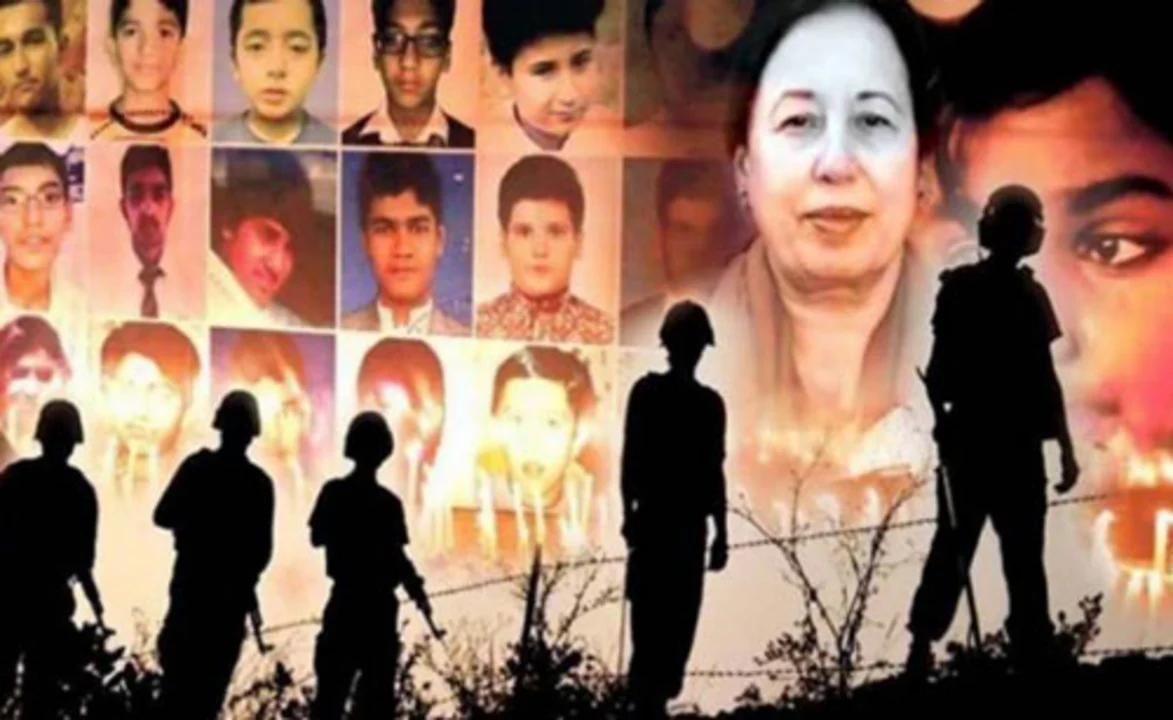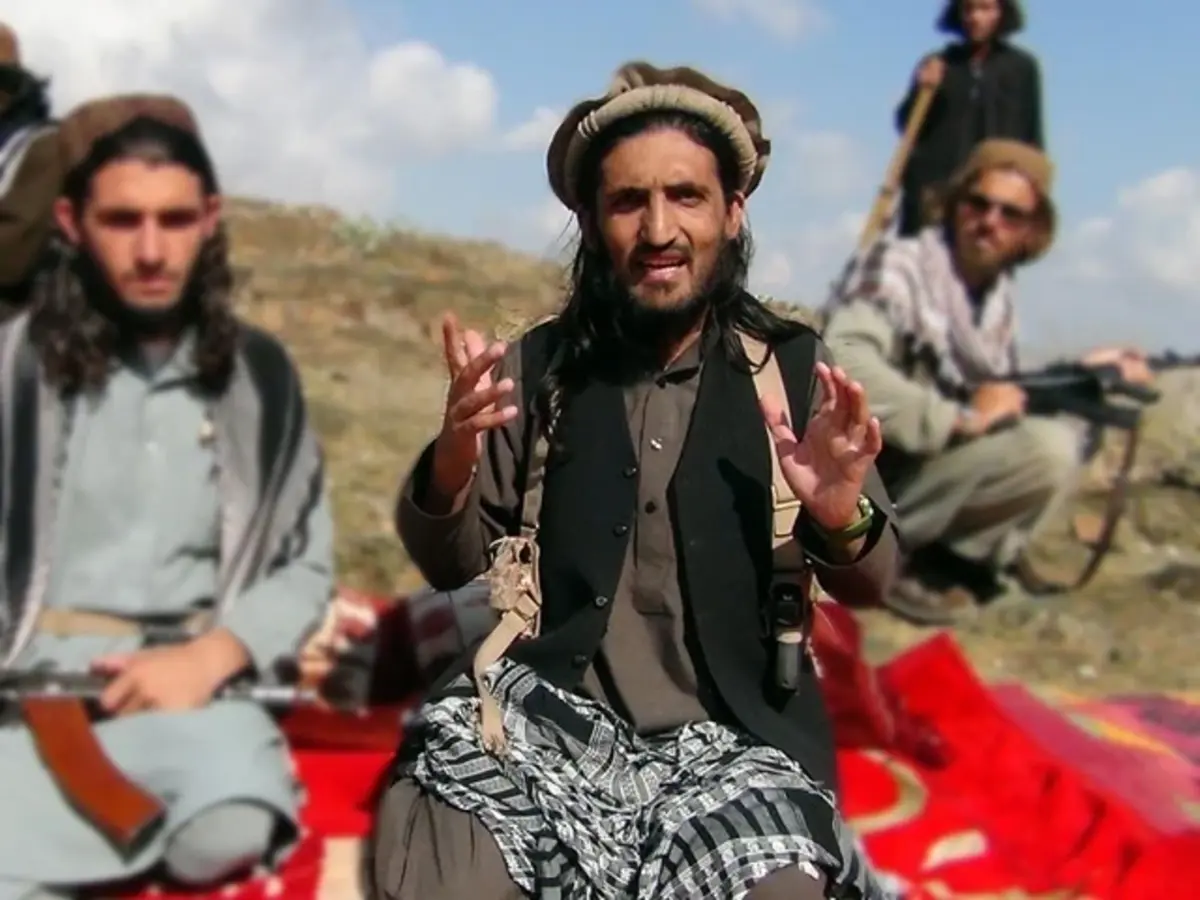Army Public School Attack that massacred 132 children
The attack on the Army Public School (APS) in Peshawar on December 16, 2014, was the biggest terrorist incident in Pakistani history. It killed more than 140 people, including 132 children and 114 injured. It was the fifth deadliest school massacre in the world.
This horrible terror attack proved to be a turning point in Pakistan marked by conflict, calamity, and sorrow. Let’s dive into the horrific depths of this heart-wrenching incident and explore its impact and aftermath in Pakistan and the region.

Historic Background
Before the APS attack, the Pakistan Armed Forces launched a coordinated military effort against multiple militant groups in North Waziristan in June 2014.
The Pakistani government and army initiated a military effort, Operation Zarb-e-Azb, in response to the 8 June attack on Jinnah International Airport in Karachi. Tehreek-e-Taliba Pakistan (TTP) claimed responsibility for this attack.
It was part of the continuing conflict in North-West Pakistan, in which more than 2,100 people lost lives so far. According to the Pakistan Army, about 90% of North Waziristan has been cleansed from militant groups.

Horrible details of Army Public School Attack
Army Public School, located on Warsak Road in Peshawar Cantt, Khyber Pakhtunkhwa. APS is part of the Army Public Schools and College Systems, which has 146 schools in Pakistan.
On the day of the attack, 1,099 kids and school personnel were at the Army Public School. The attack began about 10:30 a.m. by seven gunmen wearing explosive belts.
Before entering the school, gunmen jumped barriers surrounding the school building and set fire to the van in which they arrived. They opened fire randomly in the auditorium during a first aid training session. They soon turned sacred teaching place into bloodbaths as there were blood splashes on the walls and floors of the school.

Terrorists wanted to kill as many people as possible, not take them hostages. It resulted in a massacre of 149 people including 132 school children. The deceased children were aged between eight years and eighteen years.
Students were forced to see teachers being assassinated, including the principal, Tahira Qazi who was trying to protect children. Soon, she fell victim to brutal death getting bullet shots. The last words of valor lady Tahira were:
They are my children and I am their mother.
The late principal, Tahira Qazi

Pakistan Armed Forces Respond
Soon after getting a report of the horrific attack, Special Service Group (SSG) units arrived at APS within 15 minutes and fought the terrorists. They stopped terrorists from harming the remaining school staff and children.
Following security forces’ intervention, five terrorists entered the administration block and grabbed hostages. One attacker was shot near the auditorium, while five others fled to the administration block. Meanwhile, the Army Medical Corps and KP Police responded by securing the area.

SSG commandos surrounded the administration block and fought the terrorists. They rescued approximately 704 school staff and students.
Special sniper teams targeted and killed terrorists within the building. Seven commandos were injured, including two officers. They conducted search and clearance operations to disarm explosives planted by terrorists around school premises. They also intercepted terrorist communications during the incident.
Pakistan Army knows who they (terrorists) are and who they are in contact with, but details cannot be shared for operational reasons. They are aware of the locations and probably have surveyed the area. And it is highly conceivable that someone from inside has tipped them off.
Major-General Asim Bajwa and Pakistan Army Spokesperson, 2014
Responsibility for Army Public School (APS) Attack
Tehreek-e-Taliban Pakistan (TTP) claimed responsibility for the Army Public School Attack (APS). They did it in retaliation for Operation Zarb-e-Azb, the Pakistani military’s operation in North Waziristan that began in the summer of 2014.
TTP went after the school because the Pakistani Army went after their families. We want them to understand how much we hurt. Their six fighters successfully entered the Army school and we were giving them instructions from outside.
TTP spokesperson Muhammad Omar Khorasani

Click here to read the story of Osama Bin Laden: Al-Qaeda Leader and Most Wanted Terrorist
Aftermath of Army Public School Attack
A horrific act of savagery in the form of an APS attack shocked the entire globe mourning the lives of innocent people, primarily children. It leaves the country in shock and sadness to this date.
The Pakistani government declared three days of national mourning, and the wakefulness period was held across the country to honor the victims and innocent souls.
The Khyber Pakhtunkhwa provincial government granted compensation of PKR 2,000,000 (about US$11,300) to each of the assassinated victims of the terror assault and PKR 200,000 (roughly US$1,130) to the critically injured.
Pakistan Armed Forces and Government Action
The Pakistani military also stepped in and increased its operations against militant organizations in the tribal areas near the Afghanistan-Pakistan border, especially the TTP, in reaction to the attack.
This incident changed the dynamics of Pakistan in terms of politics and counterterrorism developments and united the nation. The Pakistani nation was very divided, especially in political matters. However, this incident unified the entire nation.

Nawaz Sharif was the Prime Minister of Pakistan in 2014. He vowed to eliminate terrorism from Pakistan at all costs and coordinated with an army to develop effective anti-terrorism strategies.
I have decided to go to Peshawar and personally will be in charge of the operation. It is my loss, and these are my children.
Nawaz Sharif, Former Prime Minister of Pakistan
Meanwhile, PTI founder Imran Khan also sabotaged his four-month-long historic sit-in protest in Islamabad against rigged elections. He stated in his final address:
Pakistan cannot afford resistance at these challenging times. We must end our sit-in. Ending sit-in protests is the need of the hour. He also performed funeral prayers in his absence for the victims of the heinous terrorist attack on the Army Public School and College.
Imran Khan, Former Prime Minister of Pakistan
The government also unveiled the National Action Plan (NAP) to fight terrorism and extremism. It included steps to strengthen security, reform the educational system, and take tough measures against militant organizations.

After the attack, Pakistani officials heavily cracked down on Afghan refugee camps to catch people who were there illegally. At least 30,000 Afghans went to Afghanistan during that time, but about 2,000 were sent back because they didn’t have legal documentation.
There was a strong international response to the incident. Several countries and organizations condemned it and offered their sympathies to the victims’ families. Prominent figures from throughout the world condemned the attack as well.

Legacy left by APS attack
The APS incident left a lasting mark on Pakistan’s collective memory. It serves as a terrible reminder of the country’s continued threat from terrorism. Security officials and citizens have made massive sacrifices in fighting terrorism.
In the years that followed, December 16th became a “National Day of Unity” and “Black Day” to honor the victims of the APS attack. This day emphasizes the country’s commitment to eliminating terrorism and supporting peace.

Conclusion
The Army Public School attack in Peshawar in 2014 was a tragic chapter in Pakistan’s history, but it also inspired the country to address the threat of terrorism hard.
The Pakistani people’s perseverance and togetherness in the face of hardship show their strength and commitment to creating a bright and safe future for future generations.
The surviving children and families of dead children and school staff are still traumatized by the psychological suffering of heart-wrenching incidents.
May victims’ souls rest in peace and impacted families have patience!
Share this content:




Post Comment